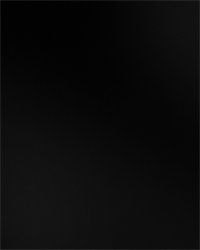Flattened Image


 Jillian Conrad thinks of the photograph as a flattened object, which it is if you are thinking only about the photograph as a three-dimensional form and not the recording and reproduction qualities the medium is more known for historically. Conrad uses these images as part source material for the rest of her work—three-dimensional objects, large-scale drawing, or installations—and partly a spatial mapping response to the studio space she inhabits at a particular point in time. The photographic image becomes a mediated way to look at the space. The images allow Conrad to look at material and physical things differently, less as objects occupying space and more as compositional elements on a flat plane. Conrad tries to erase all perspective from each image, attempting to get the photograph to become a hand-drawn medieval map of space, instead of the recording device for large-scale three-dimensional objects as its original intended use. Small color accents contribute to the image’s shift in point of view, causing one to examine the rest of the monochromatic frame and question the rest of the spatial void the color is placed in. This spatial balancing enacts the tenuous relationship between viewer and object, spectator and space, which in turn allows one to think three-dimensionally about Conrad’s flattened images.
Jillian Conrad thinks of the photograph as a flattened object, which it is if you are thinking only about the photograph as a three-dimensional form and not the recording and reproduction qualities the medium is more known for historically. Conrad uses these images as part source material for the rest of her work—three-dimensional objects, large-scale drawing, or installations—and partly a spatial mapping response to the studio space she inhabits at a particular point in time. The photographic image becomes a mediated way to look at the space. The images allow Conrad to look at material and physical things differently, less as objects occupying space and more as compositional elements on a flat plane. Conrad tries to erase all perspective from each image, attempting to get the photograph to become a hand-drawn medieval map of space, instead of the recording device for large-scale three-dimensional objects as its original intended use. Small color accents contribute to the image’s shift in point of view, causing one to examine the rest of the monochromatic frame and question the rest of the spatial void the color is placed in. This spatial balancing enacts the tenuous relationship between viewer and object, spectator and space, which in turn allows one to think three-dimensionally about Conrad’s flattened images.
[images: Jillian Conrad]




























